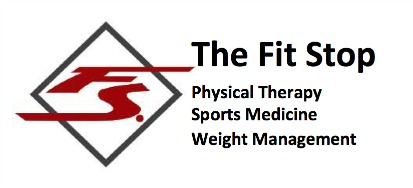What is a sprain and what can I do about it?
Most of us have been there before; many of us probably didn’t even realize it. Maybe it happened while you were playing soccer. Football? It might have been while skiing, playing basketball, running, slipping, tripping, or even simply reaching up and over your head (trust me – we’ve seen it all). Today we’ve got one of our sports injury specialists, Jared Beckstrand, PT, DPT, talking all about ligament sprains – what they are, how you get them, and some advice about some of your options once you have one! A word of advice – don’t call your surgeon until you’ve read this through!!
What is a sprain? A sprain refers specifically to an injury to a ligament. We have ligaments throughout our entire bodies. A ligament is a supportive structure that connects one bone to another bone. While we have them throughout our entire bodies, when we think sprains most often we think of the ligaments in our ankles or knees (these are, after all, the most commonly-sprained ligaments in our body).
So once we’ve sprained a ligament, that’s it, right?? Get on the phone with the surgeon and let’s get it taken care of? Not so fast…
There are different degrees of sprain: Just like any injury we incur, there can be different severities of sprains. 5 different people can walk into my clinic with sprained ankles and I could treat each one of them differently! Let’s explore this concept a little more…
 First-degree sprain: the most-common type of sprain. Oftentimes we hear a first-degree sprain referred to as a “tweak”. There is actually little tearing that occurs in the ligament, just an uncomfortable stretch that has occurred. Usually pain only lasts 1-2 days and responds well to ice and anti-inflammatories. There is little swelling and joint stability is still good.
First-degree sprain: the most-common type of sprain. Oftentimes we hear a first-degree sprain referred to as a “tweak”. There is actually little tearing that occurs in the ligament, just an uncomfortable stretch that has occurred. Usually pain only lasts 1-2 days and responds well to ice and anti-inflammatories. There is little swelling and joint stability is still good.
Second-degree sprain: A little more severe than 1st degree. The range of damage is a little more significant, and most likely there has been some micro tearing that has occurred. A “partially torn” ligament would classify as a second-degree sprain. These are usually accompanied by moderate joint instability and some swelling. You may or may not notice some bruising in the area.
Third degree sprain: This is a complete rupture of the ligament. Side A is completely separated from Side B and you’re likely in a fair amount of pain. There will definitely be some swelling and bruising accompany this one and you’ll find your joint to be very unstable. With third-degree sprains other structures are often damaged which results in significant pain whenever the area is used.
So what can I do about it? If you have suffered a 3rd degree sprain, unfortunately there’s not a whole lot that conservative care can do for you. Most likely you will have to undergo surgery to repair these damaged structures. (Note that there is a small percentage of the population that has been known to live a comfortable, normal life after completely tearing their ACL and never experience any residual effects. This population is referred to as “copers” and you can read more about that here)
And what about first or second-degree sprains? Believe it or not – your first phone call should be to your physical therapist! There is a lot that physical therapy can do to treat first and second-degree sprains. Your first steps immediately following your injury should be to R.I.C.E the area to decrease swelling/inflammation and provide it with an optimum environment in which healing can occur (read more about the RICE method here). A “typical” inflammatory response lasts about 1-2 weeks. After that time your body will start to lay down scar tissue in an effort to heal your sprain. It’s during this time that it is absolutely necessary to see your physical therapist. There’s a lot that PT’s are trained to do to facilitate healing and ensure that those damaged structures heal as strong as possible. Your therapist will incorporate a wide range of interventions proven to help your ligament heal faster, stronger, and with less likelihood of reinjury. In fact, in certain instances conservative physical therapy care was found to be just as effective as surgery to repair some of these structures (meniscus, ACL)
If you suspect you may have sprained a ligament, there is a lot we can do for you! Give one of our clinics a call at the links listed below and we would love to talk to you about your injury.
Heber City Salt Lake Farmington Murray
Fit Stop Physical Therapy – Farmington
172 N East Promontory Ste 200
Farmington, UT 84025
(801) 558-8612


